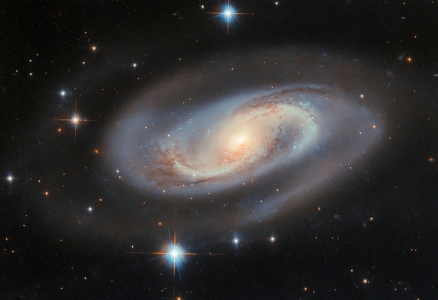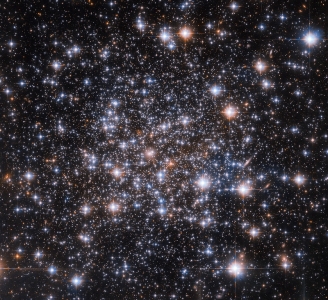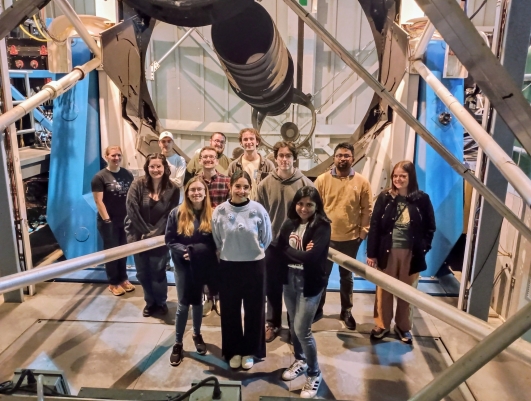Hubble Space Telescope image of spiral galaxy UGC 11397, which hosts an active galactic nucleus (AGN).
Astrophysics is a dynamic and rapidly advancing field that seeks to understand the universe from the smallest scales of planetary systems to the largest structures of galaxy clusters and beyond. The field encompasses fundamental questions about the formation and evolution of stars, galaxies, and the cosmos itself, while developing innovative observational and theoretical techniques that push the boundaries of our knowledge. It is also a driving force for technological development: advances in detector technology, space-based observations, computational methods, and data analysis techniques developed for astronomical research often find applications across science and industry. Astrophysics training provides students with highly transferable skills in data analysis, computational modeling, problem-solving, and critical thinking that lead to diverse career opportunities in academia, government, and technology sectors.
The astrophysics group at OU conducts cutting-edge research spanning observational, theoretical, and computational approaches to understand cosmic phenomena across a wide range of scales and epochs. Current research areas include gravitational lensing and the structure of quasars and active galactic nuclei, galactic archaeology and the chemical evolution of the Milky Way, white dwarf systems and gravitational wave sources, stellar formation and evolution including magnetic processes and interactions with their environments, and galaxy evolution through the study of gas flows in the circumgalactic medium. These research topics address some of the most compelling questions in modern astrophysics, including the nature of dark matter, the formation history of galaxies, the physics of compact objects, the role of magnetic fields in star formation and evolution, and the cycling of baryonic matter in the universe.

Hubble Space Telescope image of spiral galaxy UGC 11397, which hosts an active galactic nucleus (AGN).
The OU astrophysics group has institutional access (10%) to the Apache Point Observatory 3.5m telescope, and maintains active collaborations with major observatories and surveys including the Hubble Space Telescope, Chandra X-ray Observatory, James Webb Space Telescope, Keck Observatory, Gemini Observatory, Very Large Telescope, and large photometric and spectroscopic surveys such as ASASSN, LSST, ULTRASAT, SDSS, GALAH, and 4MOST. Our faculty serve in leadership roles on major international projects, including principal investigator positions on surveys and project scientist roles for next-generation facilities. The group utilizes state-of-the-art computational resources, including the OU supercomputer facilities, to conduct numerical simulations of magnetohydrodynamic processes, model galaxy evolution, and analyze large astronomical datasets.

Globular cluster Ruprecht 106 imaged by the Hubble Space Telescope.
Students pursuing astrophysics research at OU work with modern observational techniques including multi-wavelength astronomy, spectroscopy, and photometry using ground-based and space-based telescopes. They gain experience with advanced data analysis methods, statistical techniques, and large survey datasets. Students engaged in theoretical and computational research develop expertise in numerical methods, magnetohydrodynamics, stellar structure and evolution models, and cosmological simulations. Our computational facilities include access to high-performance computing resources and specialized astrophysical software packages. The combination of observational, theoretical, and computational training offered by the OU astrophysics group prepares students for successful careers in academia, national laboratories, and technology industries that value quantitative analysis and complex problem-solving skills.

OU undergraduate and graduate students at the Apache Point Observatory 3.5m Telescope on the annual Advanced Observatory Methods class trip.